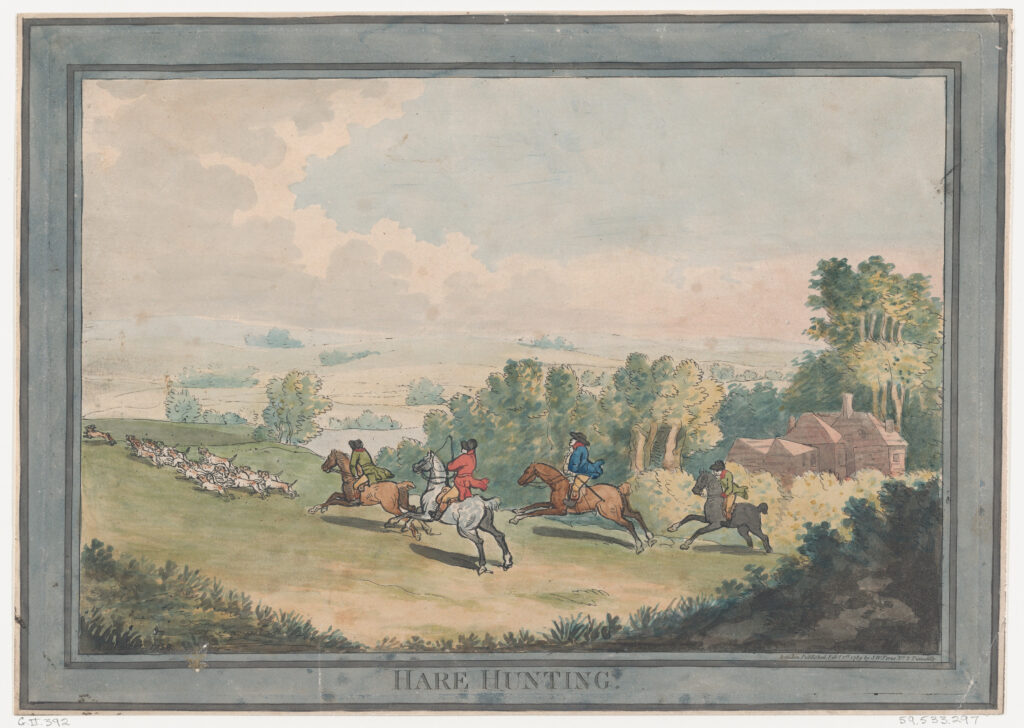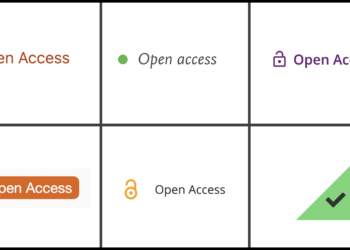Editor’s note: Today’s post is co-authored by Lisa Janicke Hinchliffe, TSK Chef, and Annika Deutsch, an MS/LIS candidate at the iSchool at University of Illinois Urbana-Champaign. Annika works at Grainger Engineering Library Information Center, which supports research for the College of Engineering, and will be joining the University of Utah as a Science and Engineering Librarian after graduation. The partner project to this work was reported in “A Failure to Communicate: Indicators of Open Access in the User Interface.”
With the continued push towards open access (OA) and the complicated nature of copyright law, users are often left wondering what they can do with the scholarly articles they find. Creative Commons (CC) licenses are the predominant mechanism for communicating usage rights; however, finding the CC license information — or being confident that there is not any — can be a challenge. Today we report on a project to investigate how publisher platforms represent CC licenses for OA and non-OA journal articles. We looked at how publishing platforms indicate usage rights for articles in results displays as well as in full-text formats.
Our investigation found that the location and format of usage rights language differed across platforms and between full-text article formats on the same platforms. We also found that usage rights are not shown in search results or offered as limiters or filters and there is inconsistent use of CC badges/icons. HTML layouts differed the most across platforms, making it particularly challenging to find usage rights information.

Methodology
To conduct our investigation, we identified the 10 publishers with the highest number of Gold OA articles published in 2021 according to the Dimensions AI database. Our goal here was to capture publishers with the most published articles in a recent full year. This resulted in a mix of fully-OA publishers and mixed-OA publishers:
- Fully OA: Frontiers, Hindawi, Multidisciplinary Digital Publishing Institute (MDPI), and Public Library of Science (PLoS)
- Mixed OA: Elsevier, Institute of Physics (IOP) Publishing, Springer, Taylor & Francis, Wolters Kluwer, and Wiley
We began our February to March 2023 data collection with a keyword search on each platform. We searched for scholarly research articles containing the word “text” as a keyword and evaluated usage rights indicators for the most recently published OA and non-OA results. We then reviewed indicators shown on search results pages and in each article’s HTML, PDF, and ePub versions. Because we anticipated that CC indicators would primarily be utilized by publisher platforms for OA articles, we conducted our investigation as if we were unaffiliated users. Therefore, our observations did not include examination of full-text formats of non-OA articles. Following the article review, we navigated to the table of contents for each of these articles and noted how usage rights were indicated there. If any of the formats or display options were not available, we noted that.
What We Found
From the keyword search, we discovered that usage rights are not shown in search results nor are they included in the limiters or filters. The only related indicators used in search results indicate OA status. Occasionally, an OA limiter is available as an option. We noted that not all fully-OA publishers offer a table of contents view; however, when offered, the table of contents format matches the keyword search results record format. As such, a user cannot gain any insight into usage rights based on the table of contents.
There is no way for users to identify whether or how a scholarly article can be distributed, remixed, adapted, built upon, or copied based solely on the search results display. Additionally, because publishers do not enable search results to be filtered based on types of CC licenses, there is no way for users to find articles that might meet a specific usage need without accessing the individual articles themselves.
The focus of the signaling on publisher platforms appears to be on open accessibility of articles regardless of institutional subscriptions. While some platforms’ search results indicated when an article was non-OA (for example, with a locked padlock icon), other mixed-OA platforms had no indicators to identify non-OA articles as such. The absence of an OA indicator is reliably an indication that an article is only available through subscription or on the other end of a paywall for the mixed-OA publishers. For fully-OA publishers, there may be no indication in a search results display that the articles are open access, perhaps indicating an assumption that readers will know the publisher only publishes OA content.
Fortunately, more information is available on reuse when one clicks through to the article in HTML, PDF, or ePub formats.
We were somewhat surprised to find that the location and format of usage rights language differed between article formats (HTML, PDF, and ePub, if available); however, we found what we expected when it came to CC indicators generally. CC badges/icons are inconsistently used across and within platforms. We found ePub versions consistently offer the most information that is also easiest to find (i.e., the information appears in the first few pages and can be located with a text search). But, only four of the 10 publishers investigated offer ePub versions.
Article PDFs usually provide usage rights information near the beginning of the document, either at the bottom of the front matter communicating how to cite the article or in a sidebar or footer of the first article page. Some publishers are, however, displaying usage rights at the end of the article PDFs, near the reference lists, even if the copyright information remains on the first page. It could be easy for users with a specific usage need to miss a CC license that is located after the conclusion of the article.
There is significant variation in how different publishers indicate usage rights on the HTML version of research articles. Our inference is that HTML versions are designed based on usability testing done by each platform, whereas downloadable formats are more likely to follow layout conventions based on print editions of journals. While some HTML layouts put the usage rights near the front matter, others put it towards the bottom of the page. Some publisher platforms utilize “Permissions” links or tabs, presumably to focus HTML pages on the content of the article itself. This removes the usage rights from the main display. When the usage rights are provided in a pop-up link or tab in this way, a browser-based search for reuse language does not return any results unless the user has already clicked on the link or tab.
For usage rights for non-OA articles, the article record generally relies on links to the Copyright Clearance Center for users to learn about the ways in which they can reuse the article and the associated fees.
It is interesting to note that Permissions pop-up links on OA articles also tend to direct the user to the Copyright Clearance Center page for the article, which is the same format publisher platforms use to provide usage licensing for non-OA articles. One exception we identified is for articles covered by CC BY-NC-ND license where the publisher does not own the copyright to the article; as a result, the publisher cannot authorize the Copyright Clearance Center to manage licensing.
Recommendations
We offer the following recommendations based on our analysis.
In communicating usage options, publishers consistently rely on either links to the CC website or to the Copyright Clearance Center to define usage rights or procedures for acquiring such rights. For users, it is important that these links are easily identifiable and searchable on the HTML pages or reuse information could be missed. Some of the user experience optimization of HTML versions of articles makes it more challenging to find usage rights. For example, when usage rights are provided in a tab or link, a browser-based search for reuse language does not return any results. This could lead to the user believing there are no reuse options associated with the article. Publishers should revisit designs that demote usage rights information from the main content display, particularly if their value proposition to their authors is fostering use of their articles or to garner revenue via licensing managed by the Copyright Clearance Center.
While publishers rely heavily on linking to the CC website to define usage rights, the CC badges/icons are not consistently used. Some publishers do not use them at all, some use them across all article formats, and some use them for only certain formats. No CC indicators are used in the search results or table of contents displays of publisher platforms. This was particularly surprising given that CC licenses have a consistent and coherent identity, unlike open access, which does not have any established universal markers.
To help users find the information that they need regarding reuse, it would be helpful for publisher platforms to:
- Utilize a textual reference to CC on all — OA and non-OA — articles so that users know to keep looking if they do not at first find it. If it is textual, it will allow a browser-based search to find it.
- If utilizing tabs or links to usage rights in an HTML format, include language on the main portion of the HTML page that refers to that tab or link where usage rights are stored or linked.
- Include text confirming there is no CC license when an article does not have one.
- Utilize the CC badges/icons across all article formats for a quick visual cue to users. It could also be helpful if CC were to offer an indicator for “no CC license” that would complement the existing badges/icons.
- Allow users to limit or filter search results by CC licenses to provide an improved user discovery experience on publisher platforms.
Conclusion
The ability for users to find usage rights information is challenging in part because each publisher has their own design and layout standards. The publishers and formats that utilize print layout conventions improve discovery of CC license information. While we do not argue that maintaining those print layout conventions is necessarily the solution, it is important that cross-industry collaboration occurs so that the overall user experience is coherent. The challenge here, as with OA indicators, is that the user experience is not in the control of any one publisher as users will find themselves on multiple platforms through the course of their research. Cross-industry collaboration will be needed to establish guidelines and recommendations for best practices.
Discussion
3 Thoughts on "What Can I Do with This? Indicators of Usage Rights in the User Interface"
Thank you for this investigation and report, Annika and Lisa. I have often been very frustrated when trying to find CC license info on articles I believe to be OA. It’s just so surprising to me that most publishers do not follow best practices concerning the display of CC license information (https://wiki.creativecommons.org/wiki/Marking_your_work_with_a_CC_license), given that these licenses are legal statements that should be prominently displayed and should link out to the CC site for that license. We have many graduate students publishing articles that they want to reuse in their dissertation, and they usually contact my office because they don’t know whether they are allowed to reuse this content. This means they either do not read or do not understand their publishing agreement and do not see any helpful information in their published articles indicating whether they can reuse their article and if so, how. If authors don’t understand rights info on their own work, how can we expect others to understand and respect it?
Interesting! Thank you. Cross-industry collaboration is indeed critical.
The JATS spec offers several elements that publishers can use in their XML that indicate permissions, usages, and licensing–https://jats.nlm.nih.gov/archiving/tag-library/1.3/element/license.html
Some of these elements come from the NISO Access and License Indicators (ALI) 2015 Recommended Practice spec.
I’d be curious to know if the elements are being used in the source content. Can publishers query their content to confirm? How does this get interpreted and presented by the platform? Good questions for publishers to ask themselves for their source XML and good questions to ask platform providers.
Hi Marianne,
It’s important to note that very often authors don’t choose to make their papers Open Access until after they have been composed, tagged, etc. In fact, many, many authors don’t make their papers OA until after they have been published. In either case, production has been completed before authors elect to publish OA (of course, this is only applicable to hybrid journals) so it’s not possible to include the tagging in the source content.



